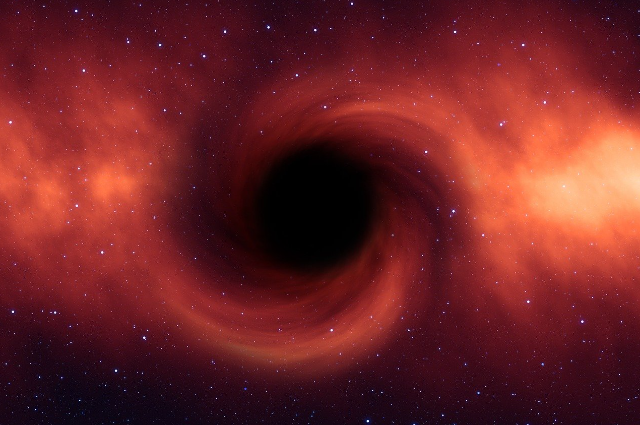
Image by Gerd Altmann from Pixabay
Time travel—a concept deeply embedded in science fiction—has long fascinated scientists and dreamers alike. From H.G. Wells' The Time Machine to the complex paradoxes of Interstellar, the ability to move through time has been a subject of endless speculation. But is time travel truly possible, or will it remain confined to imagination?
Modern physics, particularly in the realms of gravitational waves, black holes, and quantum mechanics, suggests that bending time might not be as impossible as once thought. Recent scientific breakthroughs indicate that while we are far from building a working time machine, nature itself may already possess the blueprints. This article delves into the most compelling theories, the latest experiments, and the challenges that stand in the way of real-world time travel.
Understanding Gravitational Waves and Their Role in Time Distortion
What Are Gravitational Waves?
Gravitational waves are ripples in spacetime caused by the acceleration of massive objects, such as merging black holes, neutron stars, or supernovae. First predicted by Albert Einstein in 1916 as part of his General Theory of Relativity, these waves were finally detected in 2015 by the Laser Interferometer Gravitational-Wave Observatory (LIGO), marking one of the greatest achievements in modern physics.
Unlike electromagnetic waves, which require a medium to propagate, gravitational waves travel through the very fabric of spacetime itself. These waves compress and stretch spacetime as they move, altering distances between objects without any need for a physical medium. This characteristic has profound implications for the study of time travel, as gravitational waves interact directly with spacetime and could, theoretically, provide a means to manipulate the flow of time.
Can Gravitational Waves Influence Time Travel?
Since time and space are interconnected, any disturbance in spacetime affects the flow of time. This concept has been observed through gravitational time dilation, where strong gravitational fields cause time to slow down relative to weaker fields.
Some speculative theories suggest that sufficiently powerful gravitational waves could be harnessed to create controlled distortions in time, forming localized "time bubbles" where time moves differently. If artificially generated, these waves could provide a stepping stone toward manipulating time itself.
Challenges to Using Gravitational Waves for Time Travel:
1. Energy Requirements
The energy required to artificially generate gravitational waves at a level strong enough to warp time is astronomical. The most powerful gravitational waves detected so far originate from massive cosmic events, such as black hole mergers, releasing energy equivalent to multiple suns collapsing in an instant.
Current technology cannot even come close to producing such energy levels. Even nuclear explosions or fusion reactors fall dramatically short of the required energy output.
Advancements in energy production, such as controlled nuclear fusion, antimatter reactions, or harnessing energy from quasars or supernovae, could theoretically help generate gravitational waves at useful levels.
A deeper understanding of quantum vacuum fluctuations and zero-point energy may one day allow scientists to extract vast amounts of energy from seemingly empty space.
2. Lack of Precision Control
Even if we could generate artificial gravitational waves, directing and stabilizing them for time manipulation would be extremely difficult. Gravitational waves propagate outward in all directions and are incredibly weak by the time they reach Earth, making precise control nearly impossible.
3. Unverified Theories
All theories remain speculative, relying solely on mathematical models and indirect observations.
Black Holes as Time Machines – Unlocking the Gateways to the Past and Future

Photo by Jacob Granneman on Unsplash
How Black Holes Warp Time
Black holes are among the most mysterious and powerful objects in the universe. Their immense gravitational pull bends spacetime so dramatically that even time itself slows near their event horizons. This phenomenon has been scientifically confirmed through observations of time dilation effects on objects orbiting black holes.
Kerr Black Holes and Closed Timelike Curves (CTCs)
Physicists theorize that rotating Kerr black holes could allow for closed timelike curves (CTCs)—paths that loop back onto themselves in spacetime, theoretically enabling backward time travel. However, these curves remain speculative due to physical constraints.
Can Wormholes Enable Time Travel?
Another intriguing possibility is the Einstein-Rosen bridge, commonly known as a wormhole. This theoretical shortcut through spacetime could allow travel between distant locations or even different time periods. However, wormholes come with significant challenges:
- They are highly unstable and collapse almost instantly.
- They require exotic matter (with negative energy) to remain open.
- No natural wormhole has been observed to date.
Why We Can’t Yet Use Black Holes for Time Travel
- Spaghettification: Any object approaching a black hole is torn apart by gravitational forces.
- Hawking’s Chronology Protection Conjecture: Stephen Hawking proposed that nature may prevent time travel by destroying CTCs through quantum effects.
- Paradoxes: If someone could travel back in time, logical paradoxes such as the "grandfather paradox" arise.
Quantum Time Travel – The New Frontier in Temporal Manipulation
Quantum mechanics, the study of subatomic particles, challenges our classical understanding of time. Unlike large-scale gravitational effects, quantum physics reveals a world where particles can exist in multiple states at once, be entangled across vast distances, and even influence past events in certain conditions.
Key Quantum Theories on Time Travel
- Quantum Entanglement and Retrocausality – Quantum entanglement is a phenomenon where two particles remain interconnected regardless of distance, meaning that changes to one particle instantly affect the other. Some researchers suggest this might allow for retrocausality—the idea that an action in the present could influence the past.
- Time Crystals and Temporal Stability – Time crystals, a newly discovered phase of matter, are structures that oscillate in a time-like fashion without energy input, theoretically creating stable time loops.
- Simulated Time Travel in Quantum Computers – Google’s Quantum AI Lab (2019) demonstrated a simulated time-reversed state using a quantum computer. This experiment involved reversing entropy on a microscopic scale, effectively undoing certain quantum processes.
- Challenges with Quantum Time Travel
- Decoherence: Quantum decoherence occurs when a quantum system interacts with its environment, causing it to lose its unique quantum properties. Quantum particles exist in multiple states simultaneously, but any outside disturbance forces them into a single classical state. This collapse prevents the stable existence of quantum superpositions needed for time-related experiments.
- Causal Consistency: The Novikov self-consistency principle suggests that if time travel is possible, any event that happens in the past due to time travel must be self-consistent, preventing paradoxes for example- if a time traveller attempts to alter the past, quantum probabilities may adjust to maintain a consistent timeline. Some theories also suggest parallel universes or multiple timelines could emerge to allow paradox-free time travel.
- Energy Constraints: Even if quantum time loops exist at a microscopic level, scaling them up for human use remains a massive challenge. The energy required to sustain a large-scale quantum time loop could be immense, possibly requiring new forms of zero-point energy or quantum vacuum fluctuations. Quantum fields must be manipulated in ways that maintain coherence over macroscopic time scales.
The Future of Time Travel – Where Do We Go from Here?
While time travel remains one of the greatest scientific mysteries, progress in theoretical physics and experimental research is continuously pushing the boundaries of what we understand about time and space.
What Could the Future Hold?
- Advancements in Exotic Matter Research – Could we one day stabilize wormholes?
- Quantum Computing Breakthroughs – Could simulations reveal viable paths for time manipulation?
- Deeper Understanding of the Nature of Time – Is time truly linear, or is it a construct of human perception?
Real-World Applications and Technological Impact
Although time travel remains theoretical, existing technologies and discoveries already show that manipulating time is not entirely beyond reach.
GPS and Gravitational Time Dilation
One real-world example of time manipulation comes from the Global Positioning System (GPS). Satellites orbiting Earth experience slightly weaker gravity than objects on the planet’s surface, causing their onboard atomic clocks to tick slightly faster. Engineers must account for this time dilation to ensure GPS accuracy, proving that time’s flow is influenced by gravity.
LIGO and the Detection of Gravitational Waves
The Laser Interferometer Gravitational-Wave Observatory (LIGO) has made groundbreaking discoveries by detecting ripples in spacetime caused by cosmic events. While these detections have not yet been harnessed for time travel, they provide a new understanding of how gravity influences time.
Quantum Computing and Time Simulation
Quantum computing is revolutionizing how we think about time. Google’s Quantum AI Lab (2019) simulated a time-reversed quantum state, demonstrating how certain quantum processes may challenge our perception of past and future.
Historical Perspectives on Time Travel
Time travel is not just a modern obsession—it has fascinated thinkers for centuries. Ancient myths, philosophical debates, and scientific theories have all touched upon the possibility of traversing time.
Time Travel in Ancient Cultures
- Hindu Scriptures: Ancient texts like the Mahabharata describe instances where characters experience time differently, similar to modern relativity theories.
- Norse Mythology: Some legends describe gods and mortals experiencing altered timelines through divine intervention.
Einstein’s Contribution
Albert Einstein’s Theory of Relativity (1905-1915) was the first major scientific framework to provide a physical basis for time travel. His work on time dilation—where time moves slower in stronger gravitational fields—remains the foundation for modern theories on temporal manipulation.
Thought Experiments – What If Time Travel Were Possible?
To make the subject more engaging, let’s consider a few thought experiments that explore the implications of time travel:
- The Civilization Leap Hypothesis: If time travel were possible, could an advanced civilization already be traveling through time? Would they be observing us, or even guiding human history?
- The Future Archaeologist’s Dilemma: If scientists in the future develop time travel, would they come back to witness historical events? If so, why have we never encountered time travellers?
- The Paradox of Infinite Knowledge: Could someone travel to the future, bring back advanced knowledge, and create a self-reinforcing loop where innovation has no origin?
Ethical and Philosophical Implications of Time Travel
Even if time travel becomes technologically possible, should we pursue it? The ethical dilemmas of altering past events and the impact on human free will raise serious concerns.
Would Time Travel Erase Free Will?
If the past can be changed, does free will exist? Or is every event already predetermined in a self-consistent loop?
Could Time Travel Be Restricted?
If time travel is ever achieved, governments and institutions might impose regulations to prevent misuse, similar to nuclear technology.
Could Time Travel Destroy Reality?
If one small action in the past has unforeseen consequences, time travelers could inadvertently alter reality itself.
Final Thoughts: The Path Ahead
Time travel remains one of the greatest scientific frontiers. While theoretical models hint at its possibility, real-world applications are still distant. However, history has shown that what seems impossible today can become reality tomorrow.
The journey to unlocking time travel is not just about bending time—it’s about understanding its deepest mysteries. Whether through advancements in black hole research, quantum physics, or gravitational waves, humanity continues to push the limits of what is possible. Perhaps one day, time itself will be within our grasp.
. . .
References:
- LIGO Scientific Collaboration: https://www.ligo.org
- Virgo Interferometer: https://www.virgo-gw.eu
- Kip Thorne’s Work on Black Holes and Gravitational Waves: https://www.space.com/black-holes-kip-thorne
- University of Queensland Quantum Time Loop Research: https://www.uq.edu.au
- NASA’s Guide to Gravitational Waves: https://www.nasa.gov/gravitationalwaves
- Caltech Wormhole Research: https://www.caltech.edu
- European Space Agency’s LISA Project: https://www.lisamission.org
